
Alexander Gardner's well-known portrait of Abraham Lincoln, which was taken in February 1865. Nearly four years of war had taken its toll on the president; many people remarked on how tired and drawn he looked. Image from the Library of Congress.

Inauguration day, March 4, 1865. President Abraham Lincoln delivers his Second Inaugural Address from the steps of the Capitol. The brevity of the speech, which lasted only six or seven minutes, surprised the audience. John Wilkes Booth is one of the onlookers in the crowd behind and to the left of the president, just under the sculpture in the center of the photo. Image from the Library of Congress.

Abraham Lincoln's copy of his Second Inaugural Address, with changes in his own handwriting. This is the copy he read to the public on Inauguration Day. Image from the Library of Congress.

Chief Justice Salmon P. Chase administers the oath of office after President Lincoln delivered his address. Image from the Library of Congress.

Secretary of State William H. Seward. Secretary Seward was seriously injured by one of John Wilkes Booth's co-conspirators, as was his son Francis. Both would survive, although Secretary Seward's face would bear the scars for the rest of his life. Image from the Library of Congress.
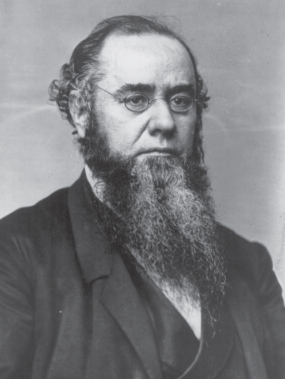
Although Secretary of War Edwin M. Stanton worried about President Lincoln's safety, and feared an assassination attempt, the president tended to dismiss Secretary Stanton's concerns. Image from the Library of Congress.
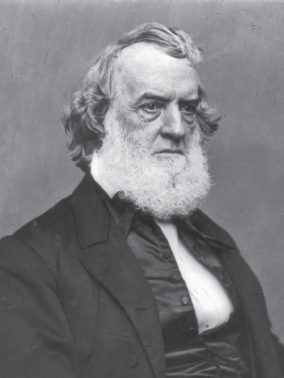
Gideon Welles served as President Lincoln's Secretary of the Navy, but he did not agree with the president's proposed policy of leniency toward the Confederacy after the war. Image from the Library of Congress.
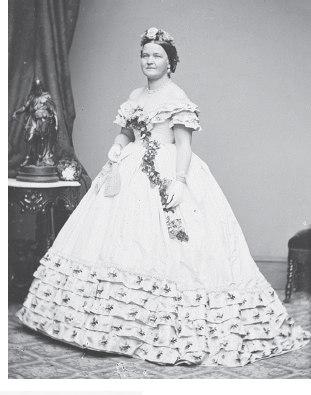
Mary Lincoln accompanied her husband to City Point, Virginia, in March, but her behavior became a source of embarrassment for both President Lincoln and herself. Image from the Library of Congress.
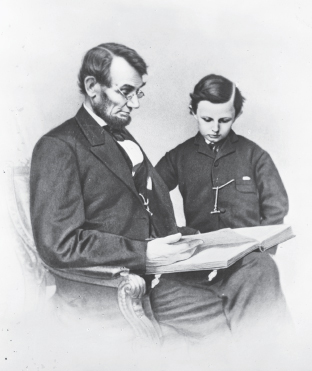
Tad Lincoln with his father. Tad and the president spent a good deal of time together; his son's presence helped take President Lincoln's mind off the pressures of Washington. Photo by Anthony Berger; image from the Library of Congress.
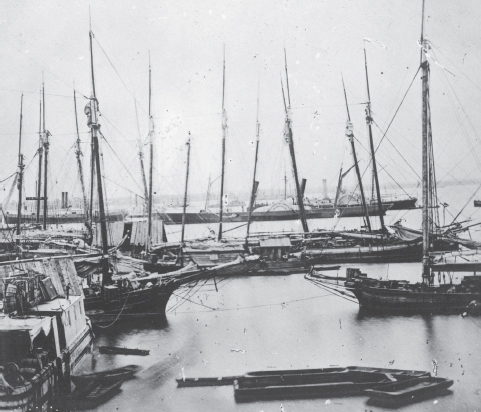
The waterfront of City Point, Virginia. City Point was the supply center for General Grant's army and was also the meeting place between General Grant and President Lincoln. Mary Lincoln was not comfortable at City Point, but her husband enjoyed getting away from Washington and its pressures. Image from the Library of Congress.
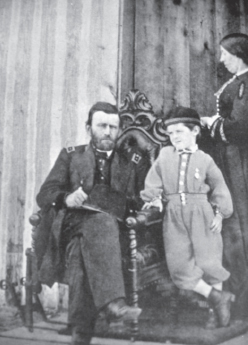
General Grant, along with his wife, Julia, and his son Jesse, in front of the general's cabin at City Point. Julia Grant did her best to get along with Mary Lincoln, in spite of the latter's erratic behavior. Image from Wikimedia Creative Commons.
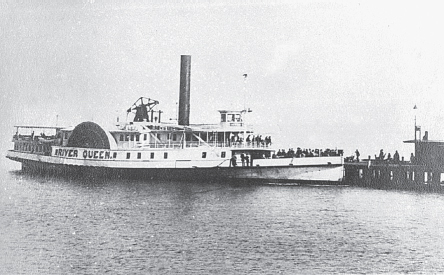
The side-wheeler River Queen took the Lincolns and their party from Washington to City Point. Aboard the River Queen along with General Grant, General Sherman, and Admiral Porter, President Lincoln drew up plans for the prosecution of the war and the rebuilding of the South. Image from Wikipedia Creative Commons.
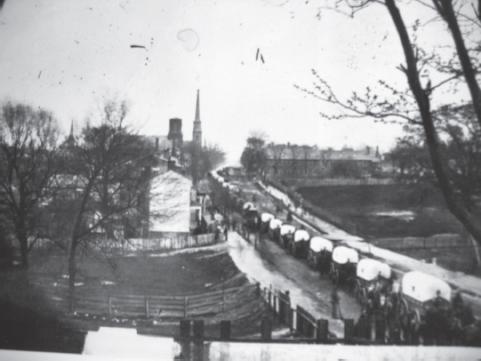
A line of federal wagons makes its way through Petersburg after Confederate troops abandoned the city. With the evacuation of Petersburg, federal soldiers could see that the end of the war was in sight. Photo John Reekie; image from the Library of Congress.
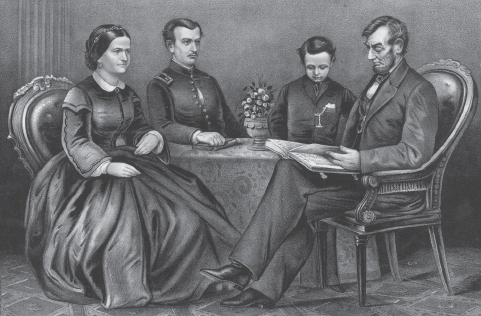
Abraham and Mary Lincoln with their two sons, Robert and Tad. Robert Lincoln was an officer on General Grant's staff. Lithograph by Currier and Ives; image from the Library of Congress.
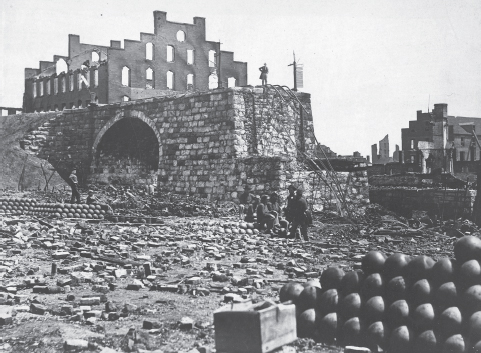
The ruins of Richmond, Virginia, in April 1865. The Confederate capital was a devastated ruin of a city, ravaged by looters. Photo by Alexander Gardner; image from the Library of Congress.
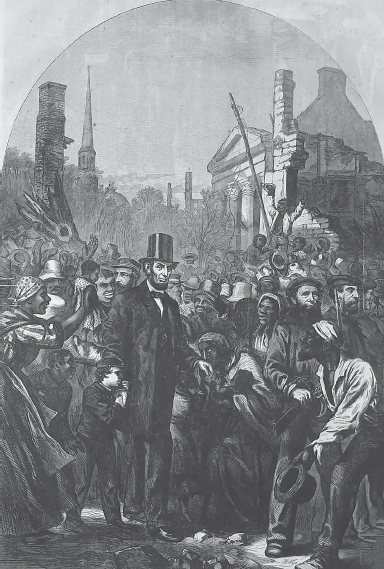
Escorted by armed sailors and accompanied by his son Tad, President Lincoln walks through the streets of Richmond on April 4. His bodyguard, William H. Crook, thought it was nothing short of a miracle that no attempt was made on the president's life. Illustration by Thomas Nast; image from Wikimedia Creative Commons.
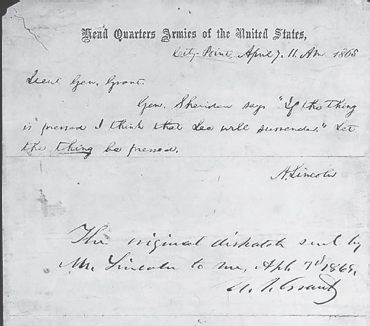
“Gen. Sheridan says ‘If the thing is pressed I think that Lee will surrender.’ Let the thing be pressed.” President Lincoln's famous communiqué of April 7 to General Grant. Under the president's message, General Grant wrote, “The original dispatch sent by Mr. Lincoln to me, April 7th 1865.” Image from the Library of Congress.
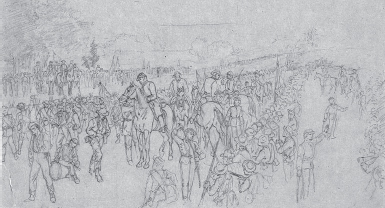
On April 12, 1865, the Army of Northern Virginia formally surrendered at Appomattox, stacking their weapons and laying down their cartridge boxes. President Lincoln was not present at the ceremony, but he had been looking forward to the moment for the past eleven months. Illustration by John R. Chapin; image from the Library of Congress.
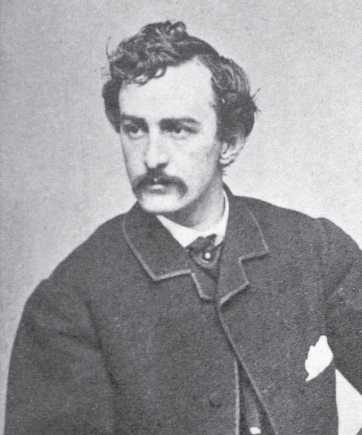
John Wilkes Booth regarded Abraham Lincoln as the cause of all of the South's problems. He imagined that he would be performing a heroic act for the Confederacy by assassinating the president. Photo by Alexander Gardener; image from the Library of Congress.
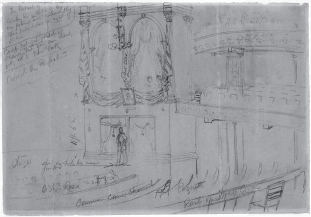
A sketch of the interior of Ford's Theatre by artist Alfred Waud, showing the box where President and Mrs. Lincoln sat during the performance of Our American Cousin. Illustration by Alfred Waud; image from the Library of Congress.
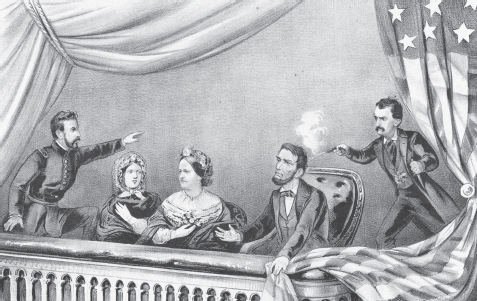
An artist's rendition of John Wilkes Booth firing his derringer at President Lincoln on the night of April 14. Image from the Library of Congress.
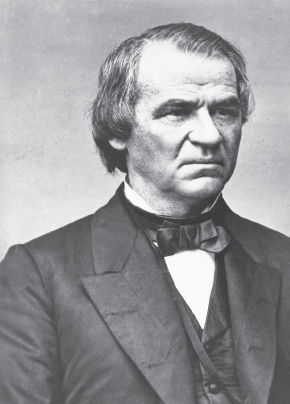
Andrew Johnson was a War Democrat from Tennessee who was named President Lincoln's running mate as a political expedient. He did not have either the personality or the political talent of Abraham Lincoln. Image from the Library of Congress.